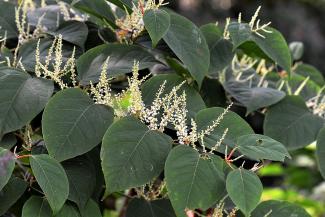Japanese Knotweed – Eradicating the Stigma
Maisie Bonfield 10-03-2022
For many years now, just the presence of Japanese Knotweed was enough to put off a potential buyer and their lender. However, as time has gone on, we have more information and knowledge on how the invasive plant works and in turn – can be controlled.
Previously, surveyors would assess the plant’s potential to cause damage to a property using the ‘seven metre rule’. The risk categories were broken down into:-
- Level 4 - Japanese Knotweed within 7 metres of a habitable space, conservatory and/or garage and causing damage to boundary walls, fences and drains etc.
- Level 3 - Japanese knotweed present within the boundaries of the property but more than 7 metres away from a habitable space, conservatory and/or garage.
- Level 2 – Japanese knotweed not found within the boundaries of the said property but was seen on neighbouring land.
- Level 1 - Japanese knotweed found on neighbouring property but more than 7 metres away from boundary.
Under the above guidance, anything over a level 1 risk category would be deemed as a ‘perceived risk’ by a lender and could result in the bank requiring a Japanese Knotweed treatment plan being carried out which can be extremely expensive, with a potential time frame in excess of 10 years.
The Royal Institute of Chartered Surveyors (RICS) are due to release new guidance for surveyors when faced with Japanese Knotweed, in a bid to open up the market for properties affected by the plant and to remove the stigma attached to it. Most of the time, even when the plant has caused little or no damage at all to a property, the mention of it being present within 7 metres in a survey could affect the value of property and result in a lender pulling the plug!
RICS has published research which confirms that Japanese Knotweed poses little to no risk to properties of sound structure, provided that appropriate management measures are undertaken. The weed of course, if not managed appropriately, can have detrimental effects on properties which are weak or are lightweight structures, such as garages, conservatories, drains etc.
Surveyors will soon be working with a new assessment method which sets out:
- the level of impact;
- if action is necessary;
- whether remediation is required; and
- whether the instruction of a specialist is required.
This new assessment criteria will help lenders be more flexible with their lending decisions, and also help conveyancing solicitors advise clients as to the risks associated with the property and any remedial works necessary.
If you want to buy or sell a property which could be affected by Japanese Knotweed, contact us to find out how we can help as leading conveyancing solicitors in Cornwall and Devon.

